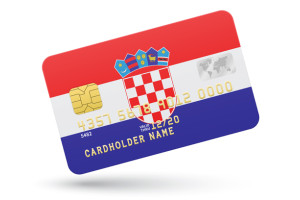Ecommerce in Croatia: this is what you should know

Croatia was quite late with exiting the economic downturn, but is now showing some great signs of recovery. This is also reflected in the online retail industry. Ecommerce in Croatia is showing great numbers. A recent research project of sMind looks at the latest trends in the online shopping behavior of Croatian consumers.
sMind surveyed more than 4,400 Croatian internet users between January and March this year. The survey was carried out by comparison shopping platform Ceneje and Slovenian research agency Valicon.
It found out that one in five Croatian internet users shop online regularly, while 47 percent buy products and services online very often. “Taking into account that more than one third of Croatian web users made their last online purchase during the last month, the frequency of online shopping is persistently growing.”
Barriers to online shopping in Croatia
But that’s not to say ecommerce is fully integrated into the shopper’s minds. Still, 12 percent of internet users in Croatia don’t have experience with online shopping. 70 percent of them prefer to go to a physical store, where they can see the product before purchase, and 44 percent don’t want to share their personal data online. A similar share of consumers is worried about abuse of their credit cards, while 37 percent don’t have trust in the security online. So a preference of physical stores and distrust are therefore the main barriers to online shopping in Croatia.
Popular payment methods in Croatia
The amount of about 65 percent of online purchases conducted in Croatia is 50 euros or less. Online customers in this South European country prefer to use PayPal, which represents the completion of 33 percent of purchases. Another 28 percent of online purchases are paid with cash on delivery, while 16 percent is done using a credit card.
In neighboring country Slovenia, there is still some degree of mistrusts when it comes to electronic payments. Cash on delivery is the most common payment method in Slovenia, as 46 percent prefer this method. Only 15 percent of online shoppers in Slovenia decide on PayPal. “Croatia successfully follows the trends of more developed European economies where electronic payments are dominant”, sMind comments.
Online research before buying something
Using information from the web when deciding which items to purchase online, is more popular in Croatia than it is on average in Europe. Almost 90 percent of Croatian internet users inform themselves about the product or service before purchase and to do that they use different channels. The dominant source of information are still search engines such as Google, used by 61 percent of respondents. But in recent years, comparison shopping engines are rapidly catching up, with 55 percent of respondents comparing products online before purchase. And 26 percent compare prices online before they decide to buy something.
Cross-border shopping in Croatia
The study also found that 22 percent of Croatian internet users shop exclusively in domestic online stores, while 33 percent carry out some (less than half) purchases in foreign web shops. A fairly large proportion, one in five respondents, makes more than 90 percent of their online purchases abroad. Among the most popular foreign merchants are eBay, Amazon, AliExpres and Sportdirect.
Igor Martinović of sMind stresses that, compared with the last year, great progress can be seen in the development of ecommerce in Croatia. He says confidence in online shopping has grown and there’s an increasing exposure of reliable retailer through trust marks, so future growth is to be expected. “We expect a larger number of new small online retailers, which will have the opportunity to succeed with the same amount of investments. Increased competition is a good thing for the final consumer because it provides them with a greater quality of services”, he says.

Comments